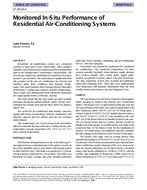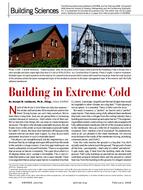Click here to purchase
Open cell spray polyurethane foam (ocSPF) has been used in insulating and sealing unvented attics for about 25 years. While ocSPF is impermeable to air, it is moisture permeable. Over time, occasional moisture control issues have occurred in some homes with ocSPF and codes have adjusted requirements in response. However, for homes in climate zones 1-4 that utilize air impermeable insulation at the roof deck, no other prescriptive means for controlling moisture at the roof deck is required by code. How well are the existing stock of unvented attics managing moisture? Research was conducted from 2017-2020 to study attic moisture in six newer unvented attic homes as well as two vented attic homes. All homes were located in central to north Florida and none had reports of moisture issues prior to or during study. House, attic, and duct airtightness was measured to verify acceptable performance. Temperature and relative humidity was measured in attics, indoors and outdoors. A plug of foam insulation at the roof deck was carefully removed in two locations per home to allow installation of wood moisture content sensors and then was carefully re-installed. Data was collected over about 2 ½ years to observe impacts throughout several seasons. No moisture damage was observed in any research homes. The roof deck moisture content tended to stay at 10% WMC or less during warm weather months from April – November. Moisture content increased during winter months and varied from 10% WMC to 18% WMC. Different influences on roof WMC were examined and outdoor and roof deck temperature were found to have the greatest impact. Findings here support IRC 2021 climate zones 2, 3, and 4 requirements, but warrant caution to be considered for unvented attics located in these specific zones that experience prolonged cold weather events.
Product Details
- Published:
- 2022
- Number of Pages:
- 9
- Units of Measure:
- Dual
- Product Code(s):
- DBldgsXV-C072


